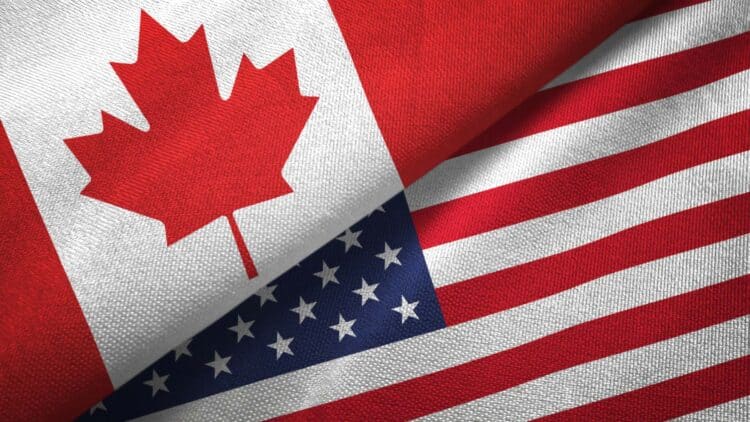Travelers who don’t think about heading down to the United States every winter may be the country’s most loyal visitors. Despite political tensions, many Canadians continue to be snowbirds. So much so that reservations at sunny winter destinations such as Florida and Arizona continue to increase. Despite this loyalty, Canadian snowbirds are being greeted at the border with delays of over an hour and a new unexpected fee.
Not only do they now have to register with biometrics to enter the country, but they also have to pay US$60 for each couple entering. Yes, you read that right, from now on, you will need to pay US$30 per person. The registration and paperwork process has caused a general feeling of unease, as they feel they are being treated like criminals crossing the border illegally. This immigration process has existed for decades on an annual basis, only now existing legislation is being applied more strictly.
Crossing the border by road
An American couple who spend every winter in the United States perfectly exemplify what is happening. They are Jacquie and Steve Ree, a couple from Ladysmith, B.C. When they tried to cross the border at Peace Arch as usual, they were stopped for a bureaucratic procedure they were not at all accustomed to. The couple was sent for secondary inspection, where they not only had to answer detailed questions, but their belongings were searched, and their RV was carefully inspected.
To make matters worse, the couple was subjected to fingerprinting and photographs for mandatory registration. After the entire inspection and feeling like potential criminals smuggling drugs through customs (which, by the way, is a very real and true problem), the couple was required to pay the official fee of $30 USD for each I-94 form they registered. There are few things more unpleasant in the world than encountering bureaucracy, inspections, and taxes at the start of a vacation.
The 30-Day Rule
According to the federal Alien Registration Act (INA § 262), any foreigner over the age of 14 who stays in the United States for 30 days or more must register. This law has been in place for many years, but it has been ignored and effectively waived for all Canadians who crossed the land border. This benefit has been revoked, and they are now required to report. Enforcement of this law is now mandatory if the trip exceeds 29 days.
The Canadian Snowbirds Association (CSA) has had to intervene to confirm the widespread confusion.
Pay or Document?
There are two ways to register; one is expensive and the other is free. If you end up filling out the I-94 form, you will have to pay US$30 per person and provide your fingerprints and photo for biometric purposes. The CSA clearly warns that travelers should be “prepared for this possibility when entering the US.”
The other option is to fill out the G-325R. This is optional registration through USCIS, which must be done after crossing the border (at no additional cost).
This process is done online and does not require biometrics. It must be completed within 30 days of entry. The main requirement is to provide a U.S. address on the form. The CSA’s advice for most snowbirds is to avoid Route 1 if possible.
This means crossing “normally,” checking online to see if an electronic I-94 was issued, and if none is found, proactively submitting the G-325R.
Consequences of this Chaos
While harsh repression is taking place on the Canadian border, there are legislative efforts in Washington to do the opposite. This is the case with Elise Stefanik, who is trying to push through the “VISIT-USA Act.” This is a bill that seeks to extend the maximum stay for snowboarders over 50 who own or rent property to 240 days without the need for a special visa.
The reality is that this bill has been circulating for years and is unlikely to be voted on. For now, this change in customs requirements is causing many Canadians to cancel their trips.

